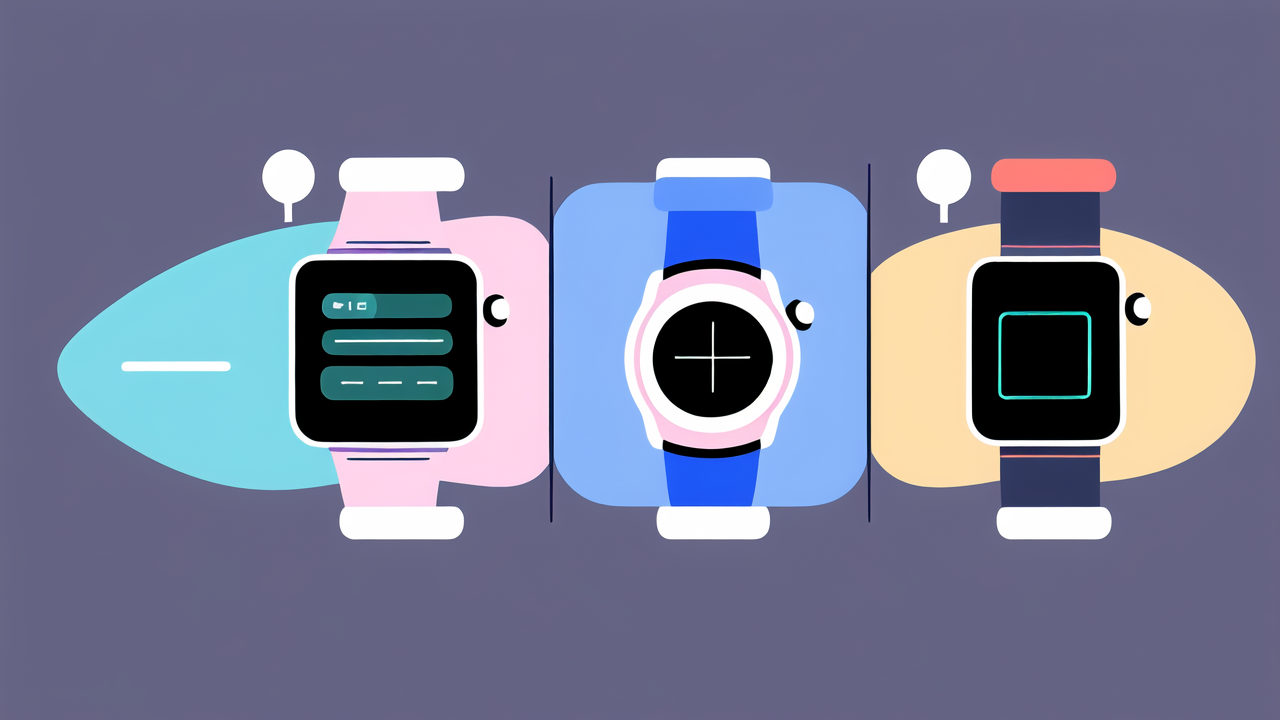Introduction to Wearable Health Technology
In an age driven by innovation, wearable health technology stands at the forefront of medical advancement. This modern marvel transforms the way individuals manage their well-being. Tiny yet powerful devices, often worn like watches, offer real-time health insights once only available in doctor's offices. They continuously track vital signs, monitor sleep patterns, and even provide fitness analytics, all from the wrist. This capability empowers people to take charge of their personal health, fostering a proactive approach to wellness. As these devices become more sophisticated and user-friendly, they lay the foundation for a new era of personalized healthcare accessibility.

Key Features of Smart Watches for Health Monitoring
Heart Rate Tracking
Heart rate tracking is one of the key features offered by smart watches that's crucial for monitoring cardiovascular health. This function allows users to monitor their heart rate in real-time, providing immediate feedback during various activities such as exercise, rest, and even sleep. It not only helps in optimizing workouts by ensuring the heart rate stays within a target zone but also in detecting abnormalities that could indicate health issues such as tachycardia or bradycardia. Many smart watches are equipped with sensors that use light to track blood flow through the skin, enabling them to calculate the beats per minute. This feature is particularly beneficial for individuals with heart conditions, athletes, or anyone interested in gaining a deeper understanding of their heart health.
Sleep Analysis
Sleep analysis in smart watches is an impressive feature that significantly contributes to health monitoring. By wearing a smart watch overnight, users can gain insights into their sleeping patterns, including the duration of different sleep stages: light sleep, deep sleep, and REM sleep. These gadgets use motion sensors and heart rate monitors to detect sleep quality, disturbances, and overall restfulness. With advanced algorithms, some models may even detect sleep apnea or snoring instances, aiding in the early detection of potential sleep disorders. Users can review their sleep data on connected apps to understand their sleep trends and take steps towards improving their sleep hygiene for better health outcomes.
Activity and Fitness Tracking
Smart watches have become a central part of fitness routines. They provide a range of features to track various aspects of physical activity. Here's how they help:
- Step Counting: They count your steps, encouraging you to meet daily goals.
- Calorie Burn: These devices estimate calories burned, aiding in weight management.
- Exercise Recognition: Many smart watches can automatically recognize and record different types of workouts.
- Distance and Pace Tracking: For runners and cyclists, they track how far and how fast you go.
- Custom Workouts: Some allow you to create and follow personalized workout plans.
- Recovery Time: They advise on how much rest you need between workouts for optimal health benefits.
By utilizing these features, individuals can set and achieve personal fitness goals while monitoring their overall physical well-being.
Advanced Health Monitoring Capabilities
ECG and Arrhythmia Detection
Electrocardiogram (ECG) technology in smart watches has taken health monitoring to a whole new level. With sensors that work directly on your wrist, these devices can track your heart's electrical activity in real time. This means they can spot potential arrhythmias — irregular heartbeats that could indicate a serious health issue. If such irregularities are detected, the watch can alert the wearer to consult with a healthcare professional. This advanced warning is crucial for early intervention and can be life-saving. Although not a substitute for clinical diagnostics, ECG features on smart watches offer a convenient way to keep a preliminary check on heart health.
Blood Oxygen Measurement
Many smart watches now incorporate sensors capable of measuring blood oxygen levels, also known as SpO2. This feature is vital for monitoring overall oxygen saturation in the blood, which is critical for assessing respiratory functions. Especially useful during physical activities and in sleep quality assessments, this health monitor can alert users to potential health issues like hypoxia. For individuals with conditions such as asthma or COPD, monitoring blood oxygen levels can be an essential part of daily health management, providing insights and alerts that can help prevent serious complications.
Stress Level Monitoring
Modern smartwatches are equipped with sophisticated sensors capable of monitoring stress levels, providing users with valuable insights into their mental well-being. These devices measure variations in heart rate and heart rate variability, which are indicators of stress response. Additionally, they analyze activity patterns and sleep quality to offer a comprehensive view of one's stress factors. Users can benefit from real-time notifications that suggest calming activities or breathing exercises when elevated stress levels are detected. This feature is particularly beneficial for individuals looking to manage their daily stress proactively and maintain mental health balance.
Data Integration and Analysis
Syncing with Health Apps
Syncing with health apps is crucial for maximizing the benefits of your smart watch's health monitoring features. When your device is connected to various health apps, it effortlessly captures and records vital health data such as heart rate, sleep patterns, and exercise routines. This automatic data transfer ensures you have a comprehensive view of your health metrics on a single platform, which simplifies tracking and analysis. Additionally, it allows for real-time updates and notifications, ensuring that you remain informed about significant health changes as they occur. By keeping all the information in one place, users can more easily share these details with healthcare providers, enhancing communication and improving overall health management.
Long-term Health Trend Analysis
Smart watches offer more than just real-time health monitoring; they enable long-term health trend analysis. This feature collects data over time, such as daily step counts, heart rate, and sleep patterns. By analyzing this data, users can uncover trends and gain insights into their health progression. For example, someone might discover that their resting heart rate has decreased as a result of regular exercise, indicating improved cardiovascular health. This analysis can also reveal subtle changes that may prompt a user to seek medical advice. By syncing the data with health apps, users can create a comprehensive health record, making it easier to share with their healthcare providers. This long-term view empowers individuals to make informed decisions about their lifestyle and health interventions.
Privacy and Security Considerations
When incorporating smartwatch technology for health monitoring, privacy and security are paramount. These devices collect sensitive personal data such as heart rate, physical activity, and even GPS locations, making them a potential target for data breaches. Manufacturers must employ robust encryption methods to protect this data both in transit and at rest. Additionally, users should be informed about what data is collected and how it is used. Ensuring compliance with data protection laws, such as GDPR or HIPAA in the case of health data, is crucial for maintaining user trust and safeguarding personal health information.
The Future of Wearable Health Technology
Emerging Sensors and Capabilities
As we look ahead, the landscape of wearable health technology is evolving rapidly. New sensors and capabilities are regularly introduced, enhancing our ability to monitor and understand our health in real time. Here's a snapshot of what's on the horizon:
- Skin Temperature Sensors: Devices may soon come with sensors that detect changes in skin temperature, which can be valuable for identifying fevers or inflammation.
- Hydration Trackers: Future wearables might estimate your hydration levels, prompting you to drink water to prevent dehydration.
- Blood Pressure Monitors: There's ongoing research into integrating non-invasive blood pressure monitoring into wearables, which could revolutionize cardiovascular health tracking.
- Glucose Monitoring: For those managing diabetes, the potential for continuous, non-invasive glucose monitoring through smart watches could be a game-changer, eliminating the need for frequent finger pricks.
- Mood Detection: Leveraging biometric data, future devices might also assess your emotional state, offering insights into mental health and stress levels.
With each advancement, wearable technology becomes more integrated into our health regimen. This paves the way for personalized healthcare, where prevention is as tailored as the treatment.
Integration with Telemedicine
The emergence of wearable health technology marks a significant advancement by integrating seamlessly with telemedicine. This progression allows health data from smartwatches — such as heart rate, sleep patterns, and physical activity — to be directly transmitted to healthcare professionals in real-time. This efficient data transfer enables immediate response from doctors, revamping traditional health consultations into more dynamic, immediate, and personalized medical advisories. As this technology advances, it is anticipated that further enhancements will allow even more comprehensive health management remotely, aiding in chronic disease management and reducing frequent physical hospital visits.
Challenges and Limitations of Smart Watch Health Monitoring
While smart watches offer significant advances in health monitoring, they also come with challenges and limitations. A major concern is accuracy; these devices can sometimes provide inconsistent or inaccurate data, especially compared to medical-grade equipment. Battery life is another limitation, as continuous health tracking can drain power quickly, necessitating frequent charges. Additionally, smart watches may not be suitable for all demographics, particularly older adults who might find the technology complex or difficult to use. Furthermore, there are concerns about data privacy and security, as personal health information could potentially be accessed by unauthorized parties. These limitations highlight the need for ongoing technology refinement and regulatory oversight to ensure user safety and data protection.
Conclusion: The Impact of Wearable Wellness on Personal Health Management
In conclusion, wearable wellness devices like smartwatches have had a significant impact on personal health management. They empower individuals to track and analyze important health metrics conveniently, providing real-time insights into their overall well-being. Heart rate monitoring, sleep analysis, activity tracking, and even more advanced functions like ECG and blood oxygen measurements have become accessible to the everyday person. With the ability to sync with health apps, these devices enable long-term health trend analysis, which can facilitate early detection of potential health issues. However, the integration of such personal health devices with the healthcare ecosystem also brings forth privacy and security considerations that need to be carefully managed. Looking ahead, we can expect smartwatch technology to continue evolving with emerging sensors and capabilities, as well as integration with telemedicine, offering even more comprehensive health monitoring tools. This technological advancement not only promises to enhance personal health autonomy but also supports the broader goal of fostering a health-conscious society.




Leave a comment
This site is protected by hCaptcha and the hCaptcha Privacy Policy and Terms of Service apply.